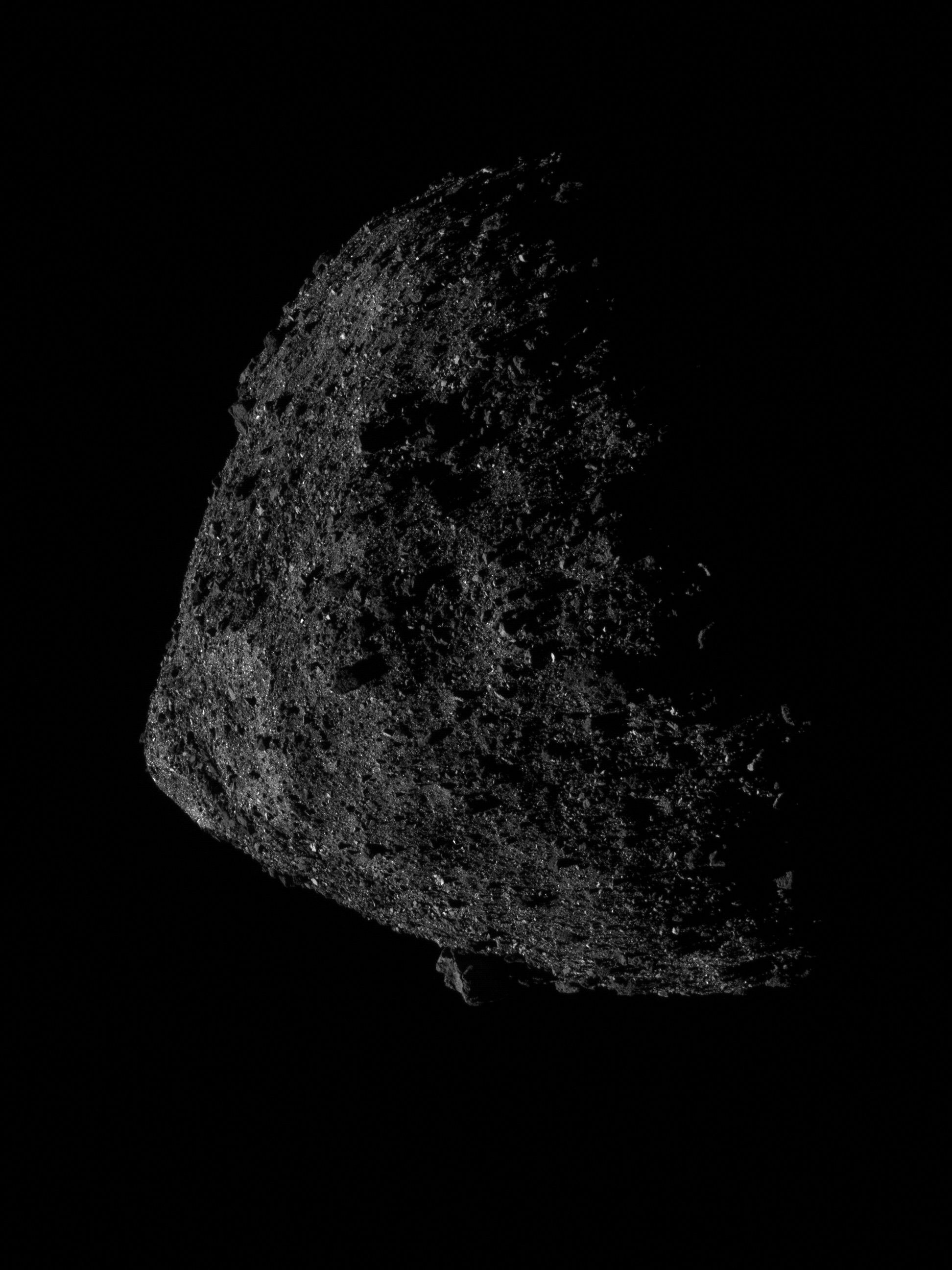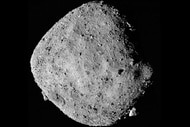Create a free profile to get unlimited access to exclusive videos, sweepstakes, and more!
Bennu: The moody face of a rubble pile asteroid… that's spitting rocks in space.

I've been somewhat remiss lately in not talking about the wonderful OSIRIS-REx spacecraft currently poking around the teeny asteroid Bennu. Happily, a couple of things motivated me to let y'all know more about it…
The first of those things is that OSIRIS-REx just broke an interesting record: In mid-June a navigation maneuver dropped the orbital height of the spacecraft to a mere 680 meters above the surface of the asteroid! That's razor’s-edge close; the asteroid itself is small but still 500 or so meters across, so this is a very tight orbit. It's also the closest orbit a spacecraft has ever held around a planetary body. The last record was held by…. OSIRIS-REx, when it was orbiting at 1.3 kilometers.
Also, Bennu isn't a sphere — it's shaped like two rounded cones pasted together at their bases — so the gravity field around it is a little weird. It's also not perfectly homogeneous throughout, but a lumpy pile of rocks. This distorts the gravity field as well, so orbiting that close means making sure OSIRIS-REx doesn't get its orbit changed too much too much day to day.
But it's worth it. The reason it's this close is to investigate a truly weird thing the asteroid is doing: Bennu is spitting rocks into space. No one is sure way, but small rocks are being ejected from the asteroid. It may be due to pressure inside the asteroid; it's a "rubble pile" asteroid, made up of zillions of smaller rocks and boulders all held together by their own gravity. The gravity is weak, but perhaps over time some rocks shift position a bit, get cracked, and fling small shards away. But we don't know, and that's why the spacecraft performed the orbital maneuver to bring it closer. Scientists want to track those bits of shrapnel and see what’s what.
Speaking of rubble piles, the other reason I wanted to write about Bennu is this stunning portrait of it from the spacecraft:
Whoaaaaa. I love the lighting on this! From this angle, the asteroid is seen half full, with the Sun off to the left. The detail is phenomenal! But then, OSIRIS-REx was just 690 meters from Bennu when it took this.
Asteroids are dark, and Bennu is no exception. It reflects only about 4% of the light that hits it, so this image of it is more reflective (har har) of how it would look if you were actually next to it, looking at it with your eyes.
And look at it! It’s covered in rocks. It IS rocks. That's why we call it a rubble pile, because it's exactly that. And look down at the bottom, you can see the huge boulder called Boulder No. 1 (for obvious reasons), or colloquially "BenBen." It's about 22 meters high, so it rises above the surface like a 6-story building. It's funny to me to see it sitting there upside-down, but hey, it's space. You pays your money, you takes your choice of "up."
This close orbit is called "Orbital B," since the first orbit was farther out. Another maneuver will pull it away from Bennu to about 1.3 km, and will be called (can you guess? Can you?) Orbital C. But part of the purpose of Orbital B is to assess sites where the spacecraft can collect samples from the surface. That part of the mission is really cool: It will drop down to very close to the surface, with the TAGSAM (Touch-and-Go-Sample-Acquisition-Mechanism) pointing down. TAGSAM will make contact with the surface, pushed against it by the spacecraft’s momentum. During this five-second period, TAGSAM will emit a puff of nitrogen gas, blowing small surface particles into its collector. Then the spacecraft will fire a thruster and pull away from Bennu once again.
The material will eventually be sent back to Earth to arrive back here in 2023, so scientists can drool over the 60+ grams of asteroidal material collected. Labs on Earth are way more sophisticated than what we can stick in a spacecraft, so we'll learn a lot more about these rock piles then.
And one more thing: Sometime after July 10 the OSIRIS-REx will pick the sample selection site. And you can help! CosmoQuest is a citizen-science site, and they have created an interactive tool where you can actually look at images of Bennu's surface and measure rocks there. This will help scientists understand the surface better, aiding them in choosing a site. So hurry and go over there, virtually poke at some rocks, and help advance science in understanding these weird little agglomerations of space rocks!














